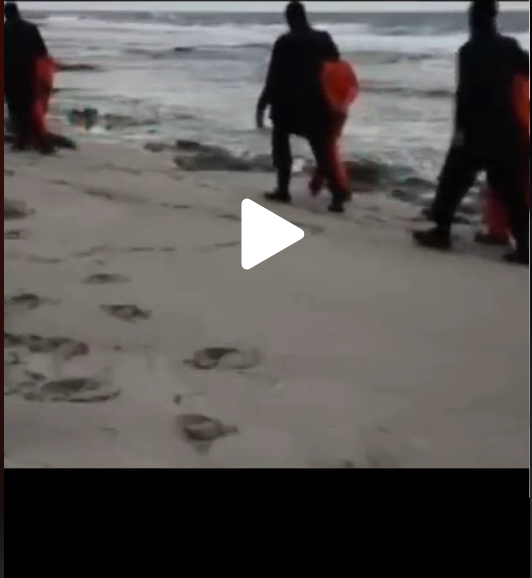Muʿādh Sāfī Yūsif al-Kasāsba, a Jordanian fighter pilot, found himself at the center of a heart-wrenching and tragic story that unfolded during the fight against the Islamic State of Iraq and the Levant (ISIL). His life took a fateful turn that led to a series of events culminating in his capture, captivity, and a horrifying end. This is the harrowing tale of Muʿādh Sāfī Yūsif al-Kasāsba.

Early Life and Background
Born on May 29, 1988, in Al Karak, Jordan, Muʿādh al-Kasāsba was the second son of Issaf and Safi Yousef al-Kasāsba. His family was well-respected and belonged to the influential Sunni Muslim Bararsheh tribe in southern Jordan. Muʿādh al-Kasāsba was raised as a devout Sunni Muslim and came from a family with a strong military tradition. His uncle, Fahed al-Kasasbeh, held the rank of Major General in the Royal Jordanian Army, adding to the family’s legacy of service to their country.
Muʿādh’s journey into military service began when he graduated from the King Hussein Air College in 2009. He joined the Royal Jordanian Air Force and embarked on a rigorous training path that ultimately led him to become an operational F-16 pilot. His career in the Royal Jordanian Air Force was marked by dedication and hard work, and by 2012, he had successfully qualified as an operational F-16 pilot, serving in No. 1 Squadron at Muwaffaq Salti Air Base.

Capture and Tragedy
The fateful day was December 24, 2014, during the ongoing military intervention against ISIL in Syria. Muʿādh al-Kasāsba was piloting an F-16 fighter aircraft, conducting a bombing raid on a brick factory near Raqqa, Syria, an area held by the militant group. Tragically, his aircraft experienced mechanical problems during the mission. The Jordanian government initially stated that a technical failure led to his ejection from the aircraft while flying at low altitude, but ISIL claimed responsibility for shooting down his plane with a heat-seeking missile.
After ejecting from the stricken plane, Muʿādh al-Kasāsba parachuted into a lake near Raqqa. Regrettably, this was not the end of his ordeal but the beginning of a nightmarish journey. He was swiftly captured by ISIL militants, who pulled him from the water.
His capture prompted immediate search and rescue efforts by U.S. officials and Jordanian forces. However, despite their best efforts, they were unable to locate him before the militants took him into captivity.

Captivity and Negotiations
While in captivity, Muʿādh al-Kasāsba’s ordeal became an international concern. Negotiations took place between the Jordanian government, the militant group ISIL, and other parties for his release. In a tragic twist, these negotiations revolved around a proposed exchange of prisoners. The captors demanded the release of Sajida al-Rishawi, an Iraqi woman sentenced to death by Jordan for her involvement in attempted terrorism and possessing explosives. In exchange, they offered to spare Muʿādh’s life and free Kenji Goto, a Japanese journalist also held captive by ISIL.
The Jordanian government, committed to ensuring Muʿādh al-Kasāsba’s safety and requesting proof of his well-being, resisted this proposal. They insisted on confirming his survival before any exchange took place. Tragically, the negotiations fell apart, and ISIL proceeded to release a video that sent shockwaves around the world.
The Horrific End
On February 3, 2015, the world watched in shock and disbelief as ISIL released a video that would forever scar the memory of Muʿādh Sāfī Yūsif al-Kasāsba. The footage depicted the young Jordanian pilot trapped inside a cage. It is a moment of profound brutality that is difficult to put into words. Muʿādh al-Kasāsba was burned to death, a horrifying act of violence that left the international community horrified and appalled.
Impact and Retaliation
The brutal killing of Muʿādh al-Kasāsba sent shockwaves through Jordan and the broader Islamic world. It was met with widespread outrage and condemnation from leaders and citizens alike. In response, the Jordanian government took swift and decisive action.
King Abdullah of Jordan ordered the executions of two Iraqi militants on death row, including Sajida al-Rishawi, whom ISIL had demanded in exchange for Muʿādh al-Kasāsba. In a series of airstrikes known as Operation Martyr Muath, a number of ISIL militants were targeted over three days as a direct retaliation for the horrific killing of Muʿādh al-Kasāsba.
Muʿādh Sāfī Yūsif al-Kasāsba’s tragic tale serves as a stark reminder of the brutality that can unfold in the midst of conflict. His memory lives on as a symbol of courage and sacrifice in the face of unimaginable adversity, and his story continues to be a poignant chapter in the fight against terrorism and extremism.
